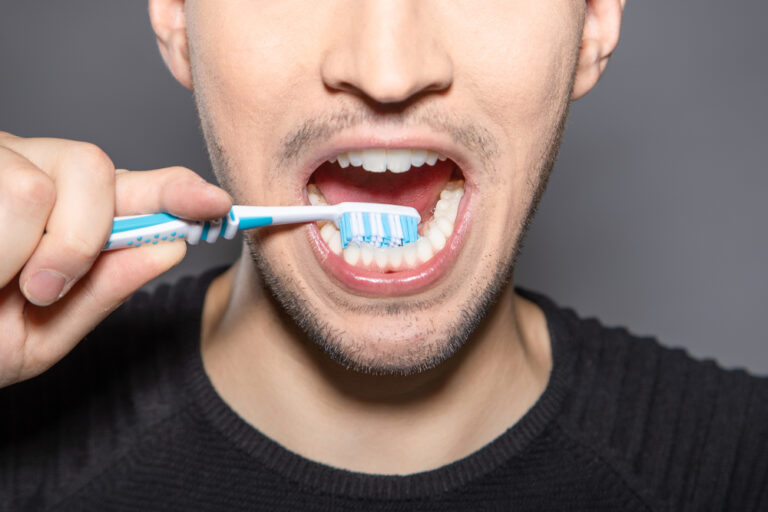Noticing a change in the texture of your teeth is very common. Over time, teeth can start to feel rougher, get tiny holes or grooves, seem more transparent, or even change color slightly. These subtle changes in your tooth enamel tend to happen slowly over many years. But when you run your tongue across your teeth and notice a different texture, it can still be alarming and leave you wondering what is going on.
There are several potential reasons your tooth enamel may change texture and feel different:
- Enamel erosion from acidic foods and drinks
- Tooth decay and cavities forming
- Natural age-related wear of enamel over time
- Developmental conditions affecting enamel formation
- Side effects of certain dental treatments
Understanding what can cause your tooth texture to change gives you insight into possible solutions. In many cases, visiting your dentist promptly allows them to identify issues early and help restore a smooth enamel surface. With proper oral hygiene and care, minor texture changes in your teeth can often be corrected.
Enamel Erosion Explained

Enamel is the hard, protective outer layer of your teeth. It contains high mineral content that helps it withstand the force of chewing and protect the sensitive interior layers of your teeth. But enamel can erode from repeated exposure to acidic foods and acidic stomach contents if you experience reflux.
Signs of enamel erosion include:
- Increased surface roughness – your teeth feel gritty or bumpy
- Small cracks, holes, or cupped lesions forming
- Teeth appear more translucent and yellow as thinning enamel exposes dentin
- Increased sensitivity, especially to hot and cold
- Rounded or dulled tooth edges
Common causes of enamel erosion:
- Frequent consumption of acidic foods and drinks – citrus, tomatoes, vinegar, soda, wine, etc. The acids weaken and dissolve enamel minerals.
- GERD or gastric reflux, which exposes teeth to stomach acid
- Purging behaviors like vomiting in those suffering from bulimia
- Bruxism – grinding or clenching your teeth at night wears down enamel
Treating and preventing enamel erosion:
Unfortunately, enamel loss from erosion is irreversible. But your dentist can help prevent further damage. Recommendations may include:
- Avoiding frequent exposure to acidic foods and beverages
- Rinsing mouth with water after consuming acidic items
- Using an alcohol-free fluoride mouthwash daily to strengthen enamel
- Taking medications to prevent gastric reflux if it is frequent
- Wearing a nightguard to protect enamel if you grind your teeth
- Trying dental bonding to restore enamel in severe erosion cases
Seeing your dentist promptly when you notice texture changes allows early intervention to prevent extensive enamel loss.
Cavities Can Damage Tooth Texture
Cavities, also called dental caries or tooth decay, are breakdown of tooth structure from plaque bacteria and acid attacking your teeth. Cavities typically start in the softer dentin layer under the enamel. As they grow larger, cavities begin to destroy enamel too.
Signs of cavities affecting enamel texture:
- White, chalky spots indicating decay under the enamel surface
- Brown, black stained areas as cavities reach the surface
- Pitting, grooves, holes and roughness forming on enamel
- Sensitivity, especially to sweet foods
- Pain or tenderness when chewing
What allows cavities to form:
- Poor oral hygiene allowing plaque buildup on teeth
- Frequent consumption of sugary foods and drinks
- Reduced saliva flow from medications, illness, or medical conditions
- High acidity in the mouth from gastric reflux or acidic foods and drinks
Treating cavities to restore tooth texture:
Restoring the smooth texture of enamel after cavities requires professional dental treatment. Your dentist will likely:
- Fill any cavities present to prevent them enlarging
- Perform a thorough professional cleaning to remove plaque
- Apply topical fluoride treatments to help strengthen enamel
- Recommend decreasing sugary and acidic foods in your diet
- Suggest saliva substitutes if dry mouth may be contributing to decay
With prompt cavity treatment, enamel can be repaired and restored to a smooth texture. Preventing new cavities helps maintain healthy enamel.
Age-Related Wear

As you age, your tooth enamel naturally wears down a bit from many years of chewing, eating abrasive foods, and exposure to acidic items. This slow process causes subtle changes like:
- Smoothing and rounding of naturally sharp tooth edges and ridges
- Development of fine cracks or craze lines in enamel
- Increased yellow/brownish tint as thinning enamel shows more dentin
Managing age-related enamel wear:
Age-related enamel wear cannot be reversed, but your dentist can help minimize ongoing damage. Recommendations may include:
- Avoiding very hard or crunchy foods that put pressure on worn enamel
- Having dental bonding applied to worn areas or cracks for protection and aesthetics
- Trying enamel reshaping procedures to smooth out rough spots
- Using whitening treatments to brighten teeth darkened from enamel loss
- Receiving preventive fluoride applications to strengthen remaining enamel
With proper home care and regular dental visits, you can limit enamel wear as you get older. Minor thinning and texture changes are normal with aging.
Developmental Conditions Affect Enamel
Certain developmental conditions can interfere with proper formation of tooth enamel and cause texture irregularities:
- Enamel hypoplasia leaves areas of thin, weak enamel prone to chipping and wear. Teeth feel rough or bumpy.
- Dentinogenesis imperfecta makes dentin appear darkened and translucent below enamel, which appears grayish.
- Amelogenesis imperfecta impairs enamel development, leaving it thin, soft, and easily damaged.
Managing developmental enamel issues:
While these enamel defects cannot be prevented, early diagnosis allows your dentist to help minimize damage:
- Bonding or veneers mask defects and shore up weak spots
- Teeth can be reshaped to smooth rough areas
- Removing stains improves appearance
- Fluoride protects against rapid wearing and decay
- Crowns fully cover and reinforce severely affected teeth
Seeing your dentist promptly when you notice possible developmental enamel issues is key to preserving your smile.
Impact of Dental Treatments

Certain common dental treatments can also inadvertently alter the texture of your tooth enamel:
- Orthodontics like braces slowly move teeth, which can leave enamel feeling rough and marked after removal.
- Whitening treatments use slightly abrasive bleaching gels that can subtly roughen enamel.
- Dental bonding adheres filling material directly to the tooth surface, which may feel noticeably different.
- Crowns and veneers can sometimes have noticeable seam lines at the edge of natural enamel.
Always discuss any enamel texture changes from dental work with your dentist to ensure teeth stay healthy. Minor issues like roughness after braces can often be quickly remedied through polishing.
When to See Your Dentist About Tooth Texture
Subtle texture changes in your tooth enamel tend to happen slowly over time. But prompt dental care allows early intervention to restore enamel and prevent worsening damage. See your dentist right away if you notice:
- Increased tooth sensitivity and pain
- Visible pits, holes, or dark stains indicating cavities
- Large areas of roughness feeling gritty and uneven
- Chipping or cracking of the enamel surface
- Translucency and discoloration of enamel
Regular dental cleanings and exams every 6 months also allow your dentist to monitor enamel health and quickly spot texture issues.
With proper prevention and early treatment, minor enamel texture changes can be corrected to keep your smile looking and feeling smooth.
Common Questions and Answers
Q: Why does my enamel erode from acidic foods and drinks?
A: Acids dissolve and weaken the mineral content of tooth enamel. Frequent exposure to acids from citrus, wine, soda, etc. allows gradual enamel loss over time, resulting in roughness.
Q: How can I tell if a cavity is forming and damaging my enamel?
A: Early signs of cavities include white spots on enamel, tooth sensitivity, and minor pitting or staining. Advanced decay causes brown/black stained areas, holes in enamel, pain with chewing, and pronounced texture changes.
Q: Is some enamel wear normal as I get older?
A: Yes, slow thinning and wear of enamel is common with aging. This exposes more yellowish dentin underneath, causing slightly darker and more translucent teeth with smoother edges. The changes happen gradually over many years.
Q: Can thinning enamel from bulimia cause teeth texture changes?
A: Yes, frequent vomiting from bulimia exposes teeth to stomach acid which erodes enamel. This causes increased roughness, sensitivity, translucency, and yellowish coloring over time. Seeking help for bulimia and dental care can prevent severe enamel loss.
Q: Why might my teeth feel rough after having braces?
A: Brackets, bands, and dental cements used on braces are difficult to fully remove from enamel. This can leave enamel feeling uneven, gritty or marked. Your dentist can smooth and polish teeth after braces removal to improve texture.
Conclusion
Changes in your enamel texture happen slowly over time but are common. Acid erosion, cavities, age-related wear, developmental conditions, and prior dental treatments can all affect your enamel structure, leaving teeth feeling rough, porous, or transparent in spots. Seeing your dentist regularly for cleanings and exams allows early detection and treatment of texture changes when they first arise. Proper daily oral hygiene, use of fluoride, and limiting acidic foods helps maintain strong, smooth enamel. With prompt professional dental care, minor enamel texture irregularities can often be corrected to restore your bright, healthy smile.







